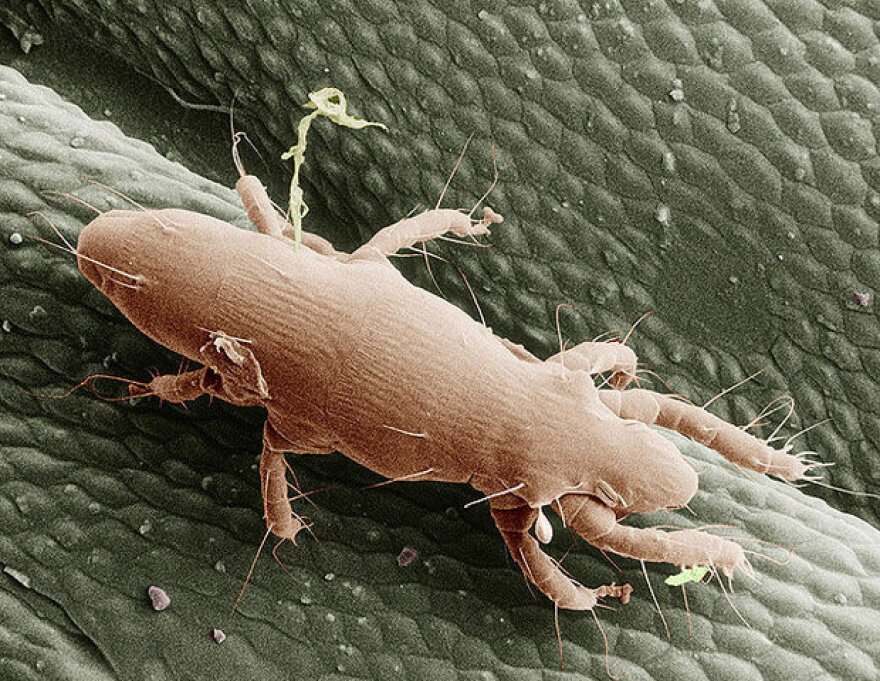If you are one of the many in Kansas City who has found themselves scratching at large, stubborn bug bites this autumn, you may think that you have encountered a spider or an enormous mosquito. But it’s likely that you have been bitten by the oak mite.
Dr. Pavika Saripalli, a physician at the University of Kansas Watkins Health Services, told Central Standard host Gina Kaufmann that the region is experiencing an “oak mite bloom right now.”
She noticed that a large number of students on KU's campus were reporting the bites to the health office.
“It’s an intense itch,” Saripalli says, “They’re very uncomfortable and the bites aren’t going away and it’s driving them crazy.”
Rick Miller, an agricultural agent at the Kansas-State University Research and Extension office, has also noticed an increase in the number of people who were bitten.
“Unfortunately, it’s one of those high peak years and we’re getting a lot of calls,” Miller says.
Miller says various factors, including an increase in the mites’ food supply, the midge, have contributed to an increase in the number of mites — and number of bites. The microscopic mites live in galls, which are sort of like a benign tumor, on different oak trees.
The galls protect them from repellent and pesticides. The mites are also light enough to be carried by the wind, which make them difficult to avoid.
Miller says that you probably won’t notice the mite itself, even as it is biting you, but you will notice its bite when it swells up the next day.
“It’s really, really small, they’re pretty much microscopic: 1/100 of an inch big," Miller says. "The results of their bites don’t show up until 10-14 hours later, and so you might not notice until you wake up the next day. You wake up and might think it was bed bugs at night, but it was probably while you were outside mowing the lawn.”
The bites themselves are not considered dangerous, but they are annoying, and Dr. Saripalli cautions people not to scratch.
“Scratching is a big part of why [the bites] are not going away so quickly,” Saripalli says. “Invest in hydrocortisone, over the counter cream, even though they say you can only use it once or twice a day I always tell people, ‘When your hand goes up to itch, put the cream on instead,’ and you’ll be helping that bite go away instead of making it worse.”
After the first freeze of the year, the mites should not be a problem anymore. Until then, people can take measures to avoid bites. Insect repellent has little effect, but covering up your skin with long sleeves and pants, especially when doing activities like raking leaves, can help protect you from the mites.
Caitlin Troutman is an intern for KCUR 89.3.




